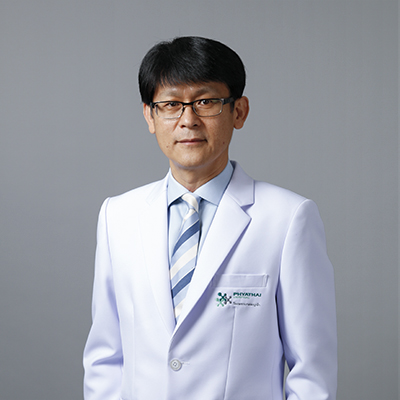Normally, women ovulate only one egg per month, which comes from the competition among many small eggs from both ovaries during menstruation. However, in the end, only the best egg that is fully grown and mature will be selected to ovulate for fertilization. But for in vitro fertilization (IVF), if we wait for nature to select only one egg to ovulate, the chance of success in one menstrual cycle is very low. Therefore, IVF requires ovarian stimulation injections from the beginning of the menstrual period to allow many small eggs that start competing from the beginning to grow simultaneously. When the eggs are fully grown, they can all be retrieved for use to increase the chances of obtaining more embryos. Therefore, “If naturally there is only a chance of ovulating one egg, IVF increases the chances many times over.”
IVF Procedure
After stimulation injections and egg retrieval, the eggs are fertilized with sperm and the embryos are cultured for about 3-5 days to select which embryos grow well or have the best quality. Then, the embryos are transferred back into the uterine cavity. Before transfer, it is recommended to perform chromosome testing to check if the embryos are normal before use because embryos that grow well and have good quality do not guarantee they are always normal. This is especially true for embryos from women over 35 years old, men with severe sperm abnormalities, or those with a history of more than two miscarriages.
The IVF procedure can be simply summarized as
Stimulation > Egg retrieval > Fertilization > Culture 3-5 days > (± Chromosome testing) > Embryo transfer into the uterus
There are 2 types of embryo transfer as follows:
- Fresh cycle embryo transfer: This is transferring embryos 3-5 days after egg retrieval. After 7-9 days post-transfer, the result will show whether the embryo has implanted or if pregnancy has occurred. However, fresh transfer has disadvantages such as bloating, abdominal distension from ovarian stimulation injections causing ovarian swelling, and abnormally high hormone levels compared to natural cycles. These factors may make the body unsuitable for embryo implantation, reducing the success rate of fresh embryo transfer.
- Frozen cycle embryo transfer: After obtaining embryos in the fresh cycle, they are frozen and stored. When the body is ready, the embryos are thawed and transferred later. Frozen transfer usually occurs about 3 weeks after menstruation, and the pregnancy result is known 7-9 days after transfer. This method has a higher success rate than the fresh transfer. However, if the laboratory is not up to standard, thawing embryos may cause problems, reducing embryo quality and success rates compared to fresh transfer.
Post-embryo transfer care
Nowadays, egg retrieval for IVF does not require hospitalization, there is no abdominal surgery scar, and the procedure takes only 30-45 minutes. After 2-3 hours of observation, patients can go home. After embryo transfer, you can do almost anything but try to rest as much as possible and avoid any impact or trauma to the abdomen. Avoid fast walking, running, or exercising, and even prolonged straining during bowel movements may cause uterine contractions, making embryo implantation difficult.
The belief that you must lie still and not move at all is not entirely correct. You can lie on your side, turn left or right, or lie face down. Even going up and down stairs is allowed, but walk slowly and avoid strong impacts. For diet, choose soft foods, avoid spicy foods, be careful not to have diarrhea, and drink water frequently to reduce straining from constipation. These measures can increase the chances of embryo implantation.
“Egg freezing” to prepare for having children in the future
For those who are married but not ready now, planning to have children in the future, or even single individuals, egg freezing is an option. As age approaches the late 30s, natural pregnancy chances decrease. Freezing eggs while young can increase the chances of having children later because younger women have more eggs and better egg quality. Eggs can be stored for up to 10 years. For those with partners, freezing embryos is better than freezing eggs because embryos have a higher survival rate and lower storage costs. When ready, the frozen embryos can be transferred immediately. IVF, egg freezing, and embryo freezing are ways to preserve your chances of having children from a young age.
Dr. Panya Saksangwong
Specialist in Reproductive Medicine
Infertility Treatment Center, Phyathai 2 Hospital







